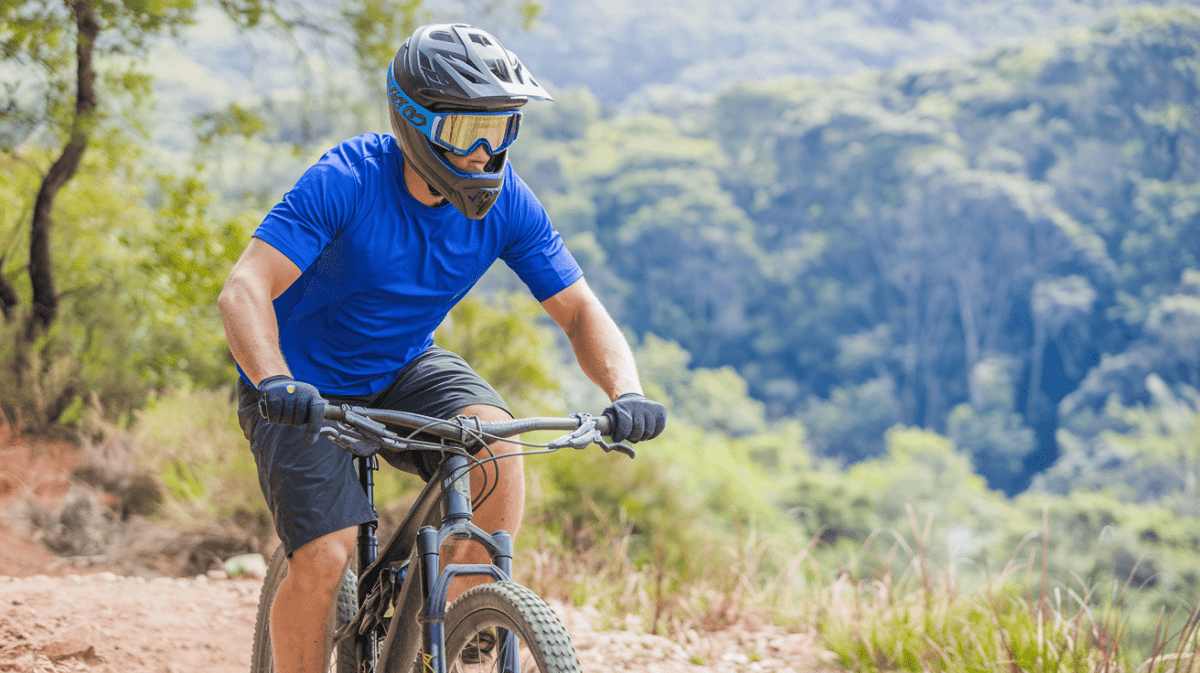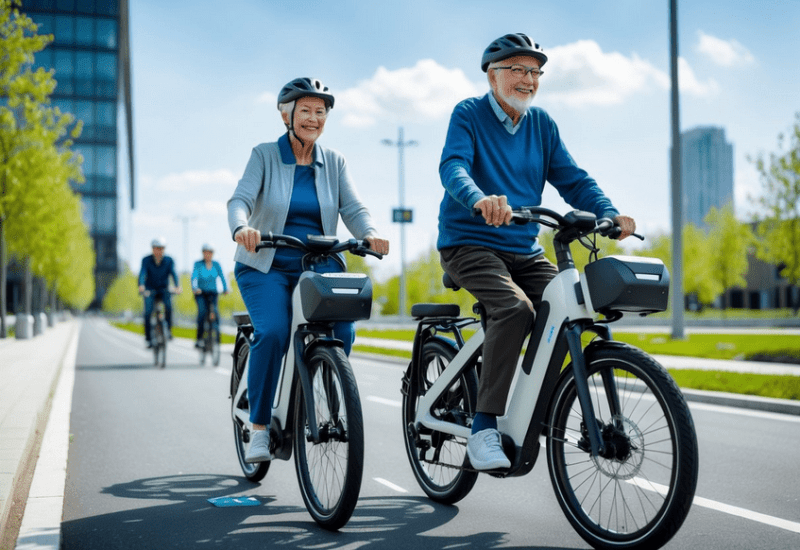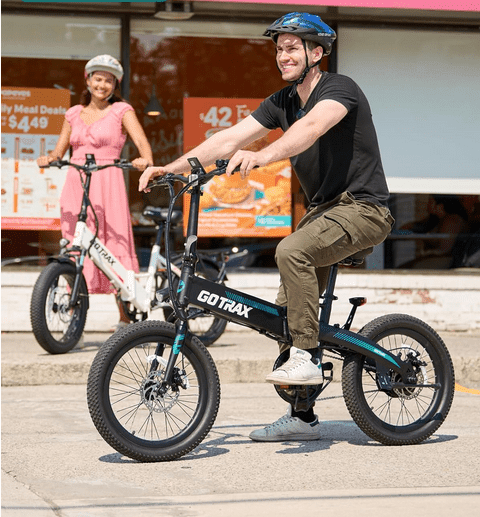Cycling and the Role of Water
As a cyclist, you know that water is essential during your rides, but do you understand why? The importance of water during cycling cannot be overstated. Water plays a crucial role in regulating body temperature and maintaining bodily functions during physical exertion.
When you cycle, your body generates heat, and your body temperature rises, which can lead to dehydration if not managed correctly. Drinking water helps your body regulate its temperature, flushing out toxins and keeping you cool and focused.
Proper hydration also helps your muscles function correctly, preventing cramps and fatigue. When you ride, your muscles are continuously contracting and relaxing, which means that they need adequate hydration to function properly. Drinking water before, during, and after your ride can help ensure that your muscles have the fluids they need to perform at their best.
Overall, understanding the science behind hydration is crucial for cyclists. It allows you to grasp the significance of staying hydrated during rides and how it can impact your performance, endurance, and overall well-being.
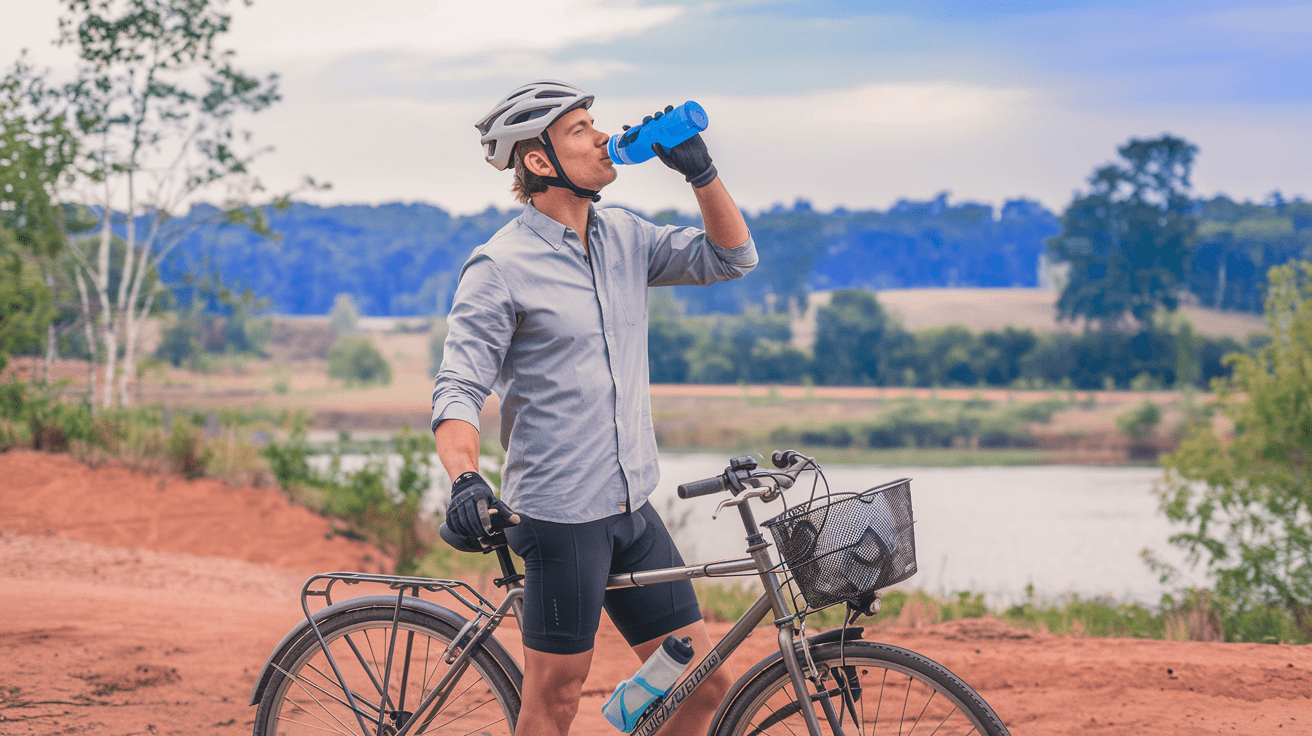
Benefits of Proper Hydration for Cyclists
Staying hydrated is critical for cyclists, and the benefits of proper hydration are numerous. By keeping yourself hydrated during rides, you can improve your performance and endurance, prevent cramps and fatigue, and promote overall well-being.
When you're properly hydrated, your body can regulate temperature, transport nutrients to muscles, and remove waste more effectively. This means you'll be able to ride faster and longer while feeling less fatigued. You'll also be less likely to experience cramps or muscle strains, allowing you to maximize your cycling experience.
In addition to physical benefits, staying hydrated can also help with mental clarity and focus. Dehydration can lead to confusion, dizziness, and headaches, all of which can hinder your riding experience. Proper hydration ensures that your brain functions at its best, allowing you to focus on the road and enjoy your ride.
Overall, the benefits of staying hydrated while cycling cannot be overstated. Drink plenty of fluids before, during, and after your rides to keep your body functioning optimally and enjoy all the benefits that come with proper hydration.
Best Hydration Practices for Cyclists
Cycling is an intense physical activity that requires proper hydration for optimal performance. Staying hydrated before, during, and after your ride is essential. Here are some of the best hydration practices for cyclists to follow:
- Drink water regularly: The most fundamental practice is to drink water regularly throughout your ride. A general rule of thumb is to consume 500ml of water for every hour of cycling. However, this amount can vary based on factors such as your body weight, the weather conditions, and the intensity of your cycling.
- Hydrate before your ride: It's crucial to hydrate before you start cycling to prevent dehydration later on. Aim to consume at least 500ml of water or a sports drink 2-3 hours before your ride. Drinking water before your ride will help you maintain proper hydration levels throughout your cycling session.
- Use electrolyte drinks: Electrolyte drinks are an effective way to replenish electrolytes lost through sweat during your ride. These drinks contain essential minerals like potassium, sodium, and magnesium, which help regulate your body's fluid balance, prevent cramps, and maintain energy levels.
- Monitor your urine color: Your urine color is an excellent indicator of your hydration status. Dark yellow or brown urine indicates dehydration, while light yellow or clear urine indicates proper hydration. Check your urine color before and after your ride to ensure you're staying hydrated.
- Plan your water stops: If you're cycling for an extended period, plan your water stops in advance. Make sure to carry enough water to last between stops. If you're cycling in a group, communicate with your fellow cyclists to ensure everyone has access to water and electrolyte drinks.
- Be mindful of the weather: Hydration needs vary based on weather conditions. Hot and humid weather can cause you to sweat more and increase your chances of dehydration. During hot rides, drink more water and electrolyte drinks to stay hydrated.
By following these best hydration practices, you can maintain proper hydration levels during your ride and improve your cycling performance.
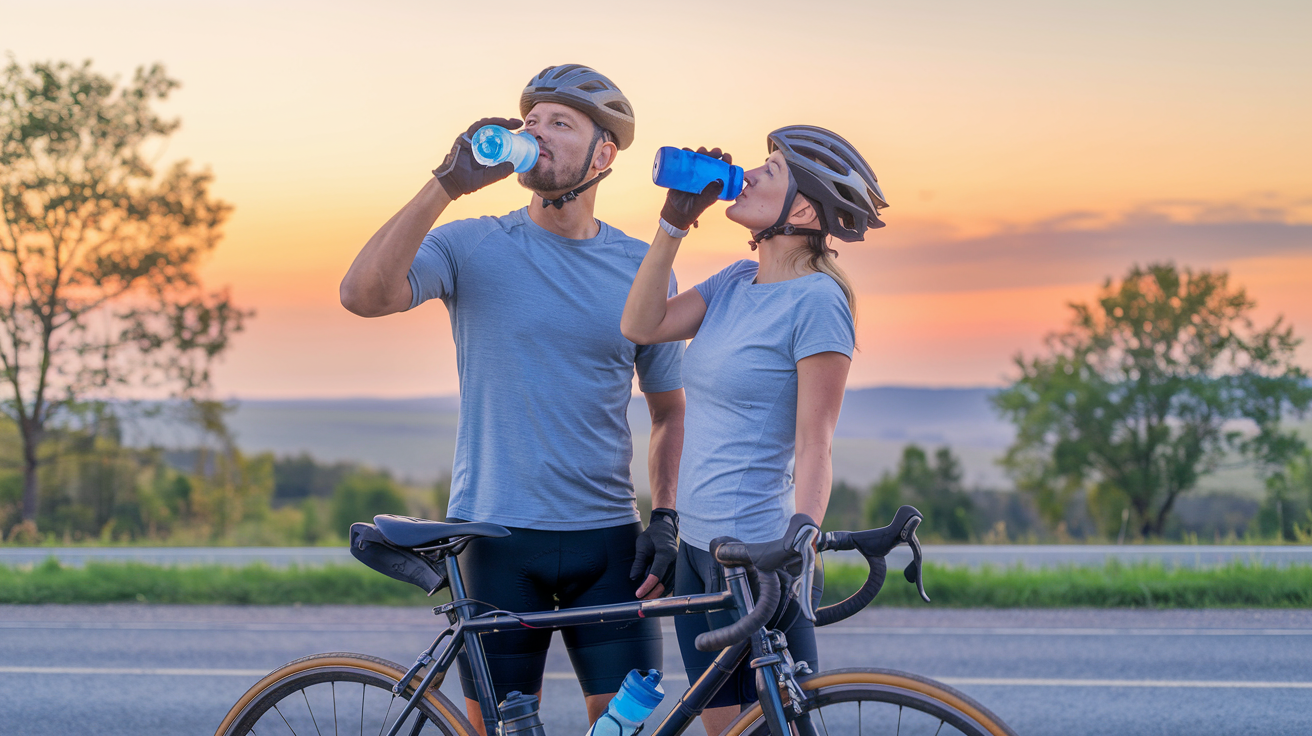 How to Stay Hydrated During Long Bike Rides
How to Stay Hydrated During Long Bike Rides
Long bike rides require careful hydration management. Here are some effective methods for staying hydrated during extended cycling sessions:
- Plan ahead: Plan your hydration strategy before embarking on your long ride. Identify water sources along your route and plan your stops accordingly.
- Drink water regularly: Hydrate consistently throughout your ride, drinking at regular intervals rather than waiting until you feel thirsty. Drinking 16-20 ounces of water every hour is a good rule of thumb.
- Use electrolyte replenishment: Electrolytes play a crucial role in hydration, especially during prolonged rides. Consider incorporating electrolyte-rich drinks or tablets into your hydration routine to maintain proper electrolyte balance.
- Monitor your urine color: A simple way to gauge hydration levels is by the color of your urine. Clear or light yellow indicates proper hydration, while darker colors suggest dehydration.
- Stay cool: Hot weather can exacerbate dehydration. Wear lightweight, breathable clothing and seek shade or air conditioning during rest stops to prevent overheating.
- Pack extra fluids: Carry extra water or sports drinks in case of unexpected delays or dehydration issues.
- Listen to your body: Pay attention to your body's signals. If you feel thirsty, drink water. If you feel fatigued or dizzy, it may be a sign of dehydration, and it is time to take a break and rehydrate.
By following these hydration strategies for long bike rides, you can maintain your fluid balance and optimize your performance on the road.
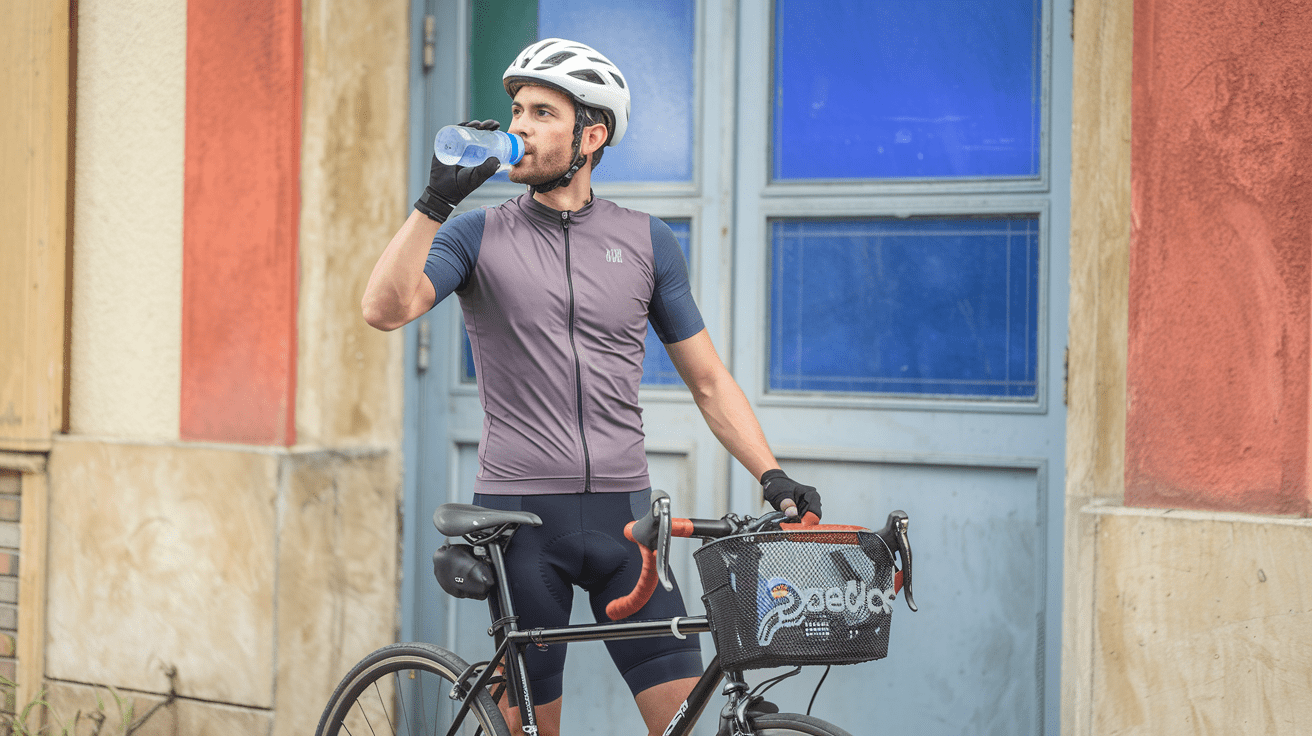 The Importance of Electrolytes for Cyclists
The Importance of Electrolytes for Cyclists
Electrolytes are minerals that are essential for various bodily functions, including regulating fluid balance, controlling muscle contractions, and transmitting nerve impulses. As a cyclist, it’s crucial to understand the importance of electrolytes in maintaining hydration and performance.
During intense rides, your body loses electrolytes through sweat, and if not replenished, this can lead to imbalances that can cause muscle cramps, fatigue, and even heat stroke. Thus, consuming electrolyte-rich drinks is vital to ensure optimal hydration levels during your rides.
There are various ways to incorporate electrolytes into your hydration routine, such as sports drinks, electrolyte tablets, and natural sources like coconut water. Sports drinks are an excellent option as they contain a balanced mix of electrolytes, carbohydrates, and fluids. Electrolyte tablets are also convenient and can be easily added to water bottles.
It’s important to note that while electrolyte drinks can enhance your hydration, they should not be relied on entirely if you are not consuming enough water. It would help if you aimed to drink 16-20 ounces of water or electrolyte drink every hour during your ride.
By incorporating electrolyte drinks into your hydration routine, you can maintain your performance levels during intense rides and avoid dehydration-related complications.
Staying Hydrated While Cycling in Hot Weather
Cycling in hot weather can be a challenging experience, especially when it comes to dehydration. The intense heat and sun exposure can cause you to sweat profusely and lose fluids at a faster rate. It's essential to take the necessary precautions to stay hydrated during your ride.
Here are some tips to help you stay properly hydrated while cycling in hot weather:
- Start your ride well-hydrated: Make sure you're well-hydrated before you start your ride by drinking enough water in the hours leading up to it.
- Bring enough water: Carry enough water with you to last throughout your ride. As a general rule, aim to drink at least one bottle per hour, more if you're sweating excessively.
- Use electrolyte drinks: When cycling in hot weather, electrolyte drinks can help replace lost minerals and nutrients and prevent dehydration and muscle cramps. Choose a drink with a balance of sodium, potassium, and magnesium.
- Pack a cold towel: A cold towel wrapped around your neck or forehead can help reduce body temperature and keep you cool during the ride.
- Plan your route: Plan your route to include regular water stops or refill points to ensure you have access to fluids throughout your ride.
- Watch for signs of dehydration: Be aware of the signs of dehydration, such as dizziness, fatigue, and decreased urine output. Take appropriate action if you notice these symptoms.
- Avoid alcohol and caffeine: Avoid consuming alcohol and caffeine in the hours leading up to your ride as they can have a diuretic effect and increase fluid loss.
- Wear appropriate clothing: Wear lightweight, breathable clothing that allows sweat to evaporate and helps regulate body temperature.
Following these tips, you can stay hydrated and avoid dehydration during your hot-weather cycling adventures.
Top Drinks for Cycling Hydration
Water is not your only option when it comes to staying hydrated while cycling. Different drinks can be incorporated into your hydration strategy to enhance your performance and overall well-being. Here are some of the best drinks for cycling hydration:
- Sports drinks: These are specially formulated to replace fluids and electrolytes lost during physical activity. They typically contain a mix of water, sodium, and potassium, which can help prevent cramps and other muscle-related issues.
- Coconut water: This natural hydration drink contains electrolytes, including potassium, magnesium, and calcium. It's also high in antioxidants, making it a great option for long rides.
- Fruit juice: Natural fruit juices contain a good mix of carbohydrates, electrolytes, and vitamins, making them a great option for hydration. However, be mindful of the sugar content in some juices.
- Green tea: Drinking green tea before a ride can help improve endurance and reduce fatigue. It's also a great source of antioxidants, which can help protect your cells from damage.
- Homemade electrolyte drinks: You can create your own electrolyte-rich drink by mixing water, salt, honey, and lemon juice. This drink is a great option for those who prefer natural hydration solutions.
Remember, hydration is essential for optimal performance and well-being during cycling. Incorporate these drinks into your hydration routine to stay hydrated and energized throughout your ride!
Preventing Dehydration while Cycling
Dehydration can significantly impact your cycling performance and overall health. To avoid this, it's important to stay hydrated throughout your ride. Here are some tips:
- Drink fluids regularly, even if you don't feel thirsty. Waiting until you are thirsty can put you at risk for dehydration.
- Monitor your hydration levels. Pay attention to your urine color and frequency. Dark and infrequent urine can indicate dehydration.
- Drink fluids that contain electrolytes, especially during longer rides. Replacing lost electrolytes can help prevent muscle cramps and fatigue.
- Avoid alcohol and caffeine, as these can dehydrate you.
- Plan and bring enough fluids for your ride. Depending on the weather and duration of your ride, you may need to bring more fluids than usual.
By following these tips, you can prevent dehydration and stay properly hydrated during your cycling sessions. Remember, staying hydrated can help you perform better and feel better on the bike.
Top Hydration Products for Cyclists
Staying hydrated while cycling is crucial to your performance and well-being. Fortunately, the market offers many hydration products designed specifically for cyclists. Here are some of the top hydration products for cyclists:
Water Bottles
Water bottles are a cyclist's most basic hydration tool. When choosing a water bottle, consider material, size, and ease of use. Look for bottles made from BPA-free materials, such as stainless steel or plastic, and those that fit snugly in your bike's cage. For longer rides, consider carrying multiple bottles or larger-capacity ones.
Hydration Packs
Hydration packs are backpacks that come with a built-in water reservoir. They allow you to carry significant water while keeping your hands free for steering and braking. Look for hydration packs that fit comfortably and provide adequate ventilation on the back. Also, check the size of the water reservoir and how easy it is to refill on the go.
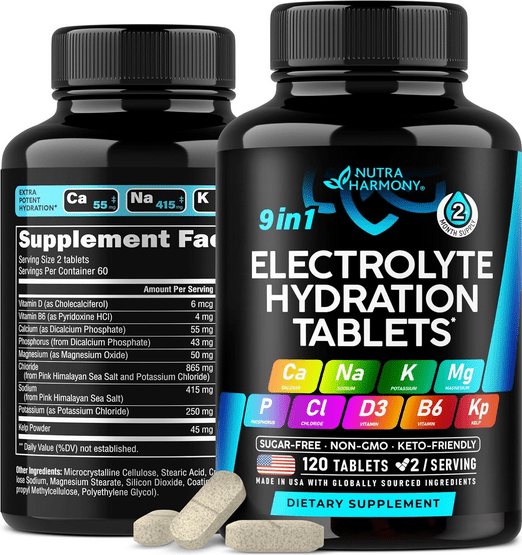
 Electrolyte Tablets
Electrolyte Tablets
Electrolyte tablets are a convenient way to replenish electrolytes lost through sweat. They come in portable, easy-to-use packaging, making them ideal for long rides. Look for products containing sodium, potassium, magnesium, and calcium, and avoid those with added sugars or artificial flavors.
Cycling-Specific Sports Drinks
Cycling-specific sports drinks are designed to provide the carbohydrates and electrolytes required during intense rides. Look for drinks with a balanced carb-to-electrolyte ratio and those containing natural ingredients. Avoid drinks with high amounts of caffeine, artificial sweeteners, or colors.
Hydration Supplements
Hydration supplements come in powdered form and can be added to your water bottle or hydration pack. They usually contain a mix of electrolytes, carbohydrates, and other nutrients to support hydration and performance during rides. Look for supplements with a natural ingredient profile and avoid those with added sugars or artificial sweeteners.
Remember to choose hydration products that suit your needs and personal preferences. Incorporating these products into your hydration routine can help you stay hydrated and perform at your best on the bike.
Hydration Strategies for Endurance Cycling
Endurance cycling presents unique challenges for hydration. Maintaining proper fluid and electrolyte levels can mean the difference between finishing strong or hitting the proverbial wall. Whether you're training for a long-distance race or embarking on an extended solo ride, you need to have a solid hydration strategy in place. Here are some tips to help you stay properly hydrated during your endurance cycling adventures.
1. Start Hydrating Early
Don't wait until you're on the bike to begin hydrating. Start drinking water at least two hours before you hit the road. This will ensure that you're starting your ride with optimal hydration levels. You can replenish your electrolytes with a sports drink, coconut water, or other electrolyte-rich beverages before pedaling.
2. Plan Your Fluid Intake Intervals
During long rides, drinking fluids regularly is essential to avoid dehydration and prevent performance decline. Plan your fluid intake intervals based on your body's needs. Generally, aim for around 20 ounces of fluid every hour on the bike.
3. Use Electrolyte Supplements
Endurance cycling can deplete your body's electrolyte reserves. Consider using electrolyte supplements like Nuun tablets or GU Hydration Drink Tabs to combat this. These convenient supplements can help replenish essential electrolytes and maintain fluid balance during long rides.
4. Monitor Your Sweat Rate
Monitoring your sweat rate is one way to determine how much fluid you need to drink during your ride. Weigh yourself before and after your ride, and track how much fluid you consume. This will help you establish a baseline for your fluid needs so you can adjust your intake accordingly.
5. Bring Plenty of Fluids
On endurance rides, having enough fluids to sustain your hydration needs is crucial. Pack enough water bottles or hydration packs to last the duration of your ride. If you're unsure how much to bring, consider weighing your drink containers before and after filling them with fluids. This will give you an idea of how much you're carrying and how much you're consuming.
6. Take Advantage of Rest Stops
If you're participating in a long-distance ride or race, take advantage of rest stops to hydrate properly. Use these breaks to refill your fluids, consume electrolyte drinks or supplements, and allow your body to rest and recover.
Following these hydration strategies for endurance cycling, you can keep your body properly fueled and hydrated for optimal performance. Remember, staying hydrated is not just about feeling good; it's essential for your safety and well-being on the bike.
Tips for Proper Hydration on Bike Rides
Staying hydrated is essential for a successful and enjoyable bike ride. Here are some tips to help you maintain proper hydration:
1. Start hydrated
Before you start your ride, ensure that you are already hydrated. Pre-hydrating can prevent dehydration and improve your performance. Drink at least 16 ounces of water or an electrolyte-rich drink a few hours before you begin your ride.
2. Have a hydration plan
Planning your hydration stops will help you avoid dehydration and fatigue. Depending on the length of your ride, determine how much water you will need and where you can refill your water bottles or hydration pack.
3. Drink regularly
During your ride, drink regularly, even if you don't feel thirsty. Sip small amounts of water or sports drinks every 15 to 20 minutes. This method will help you maintain proper hydration levels without overdrinking.
4. Add electrolytes
Electrolytes are essential for hydration, especially during longer rides. Add electrolyte tablets or mix an electrolyte-rich drink with your water to replenish lost minerals. You can also consume foods that are rich in electrolytes, such as fruits and nuts.
5. Listen to your body
Pay attention to your body to determine your hydration needs. If you feel thirsty or experience signs of dehydration like headache, dizziness, or fatigue, stop and drink water or an electrolyte-rich drink.
6. Adjust for weather conditions
Hot weather or high-altitude rides require additional hydration. Increase your water intake and add electrolytes to your drinks. You may need to adjust your hydration plan based on weather conditions and the duration of your ride.
By following these tips, you can ensure proper hydration and optimize your performance on your bike rides. Remember to stay hydrated to have a safe, successful, and enjoyable ride!
FAQ
Q: What is the role of water in cycling?
A: Water is essential for cyclists as it helps regulate body temperature, lubricate joints, transport nutrients, and remove waste products. Staying hydrated is crucial for optimal performance and overall well-being during cycling.
Q: What are the benefits of proper hydration for cyclists?
A: Proper hydration can improve performance, enhance endurance, prevent cramps and fatigue, and promote overall well-being during cycling. Staying hydrated allows cyclists to maintain optimal physical and mental function throughout their rides.
Q: What are the best hydration practices for cyclists?
A: To stay properly hydrated, cyclists should drink at regular intervals, consume an adequate amount of water, and consider using electrolyte-rich drinks to replenish minerals lost through sweat. Listening to their bodies and adjusting hydration needs is also important.
Q: How can I stay hydrated during long bike rides?
A: Staying hydrated during long bike rides requires careful planning. Cyclists should ensure they have enough water, electrolytes, and plan for water stops along their route. Regularly sipping water and consuming electrolyte-rich drinks can help maintain hydration levels.
Q: Why are electrolytes important for cyclists?
A: Electrolytes play a vital role in maintaining hydration and performance. They help regulate muscle function, nerve impulses, and fluid balance. Consuming electrolyte-rich drinks can help prevent electrolyte imbalances and enhance overall hydration during cycling.
Q: How can I stay hydrated while cycling in hot weather?
A: Hydrating in hot weather is crucial to prevent heat-related illnesses. Cyclists should drink water frequently, wear appropriate clothing to minimize heat exposure, and be aware of signs of dehydration such as dry mouth, dizziness, and fatigue. It is important to take regular breaks and seek shade when necessary.
Q: What are the top drinks for cycling hydration?
A: Besides water, sports drinks, homemade hydration solutions, and electrolyte-rich beverages can enhance hydration for cyclists. These drinks provide necessary fluids and electrolytes to replenish what is lost during physical exertion.
Q: How can I prevent dehydration while cycling?
A: Preventing dehydration involves monitoring hydration levels, recognizing dehydration symptoms, and taking appropriate action. Cyclists should drink regularly, even before feeling thirsty, and consider using electrolyte-rich drinks to replenish fluids and minerals lost through sweat.
Q: What are the top hydration products for cyclists?
A: Cyclists can access various hydration products, including water bottles, hydration packs, electrolyte tablets, and other accessories. These products can enhance hydration convenience and provide options for carrying fluids during rides.
Q: What are some hydration strategies for endurance cycling?
A: Endurance cyclists require specialized hydration strategies. Planning hydration stops, utilizing hydration support vehicles, and maintaining a consistent fluid intake is essential for staying hydrated during long-distance rides.
Q: What are some tips for proper hydration on bike rides?
A: To maintain proper hydration, cyclists should listen to their bodies, establish a hydration routine, and adjust water intake based on weather conditions and ride duration. It is important to prioritize hydration to optimize performance and well-being on the bike.
Recent Featured Articles:
Safe Biking for Beginners: Unlock Your Cycling Potential
Introduction: Unleash Your Adventures with the Perfect Electric Bike
5 Common E-Bike Maintenance Mistakes to Avoid
